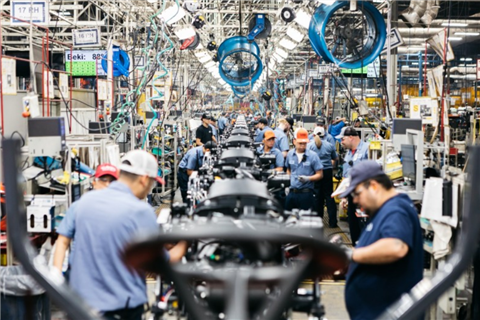Get out ahead of supply chain resilience
24 April 2023
By Joel Dandrea, SCRA CEO
For today’s global supply chains, it might seem like one crisis after another. A persistent shortage of raw materials, the ever-present workforce shortage (including managers), geopolitical risk, looming inflation and soaring costs for industrial energy in Europe connected to the war in Ukraine.
 More than 98 % of equipment manufacturers surveyed by AEM indicate that supply chains is still a significant issue. (Photo: AEM)
More than 98 % of equipment manufacturers surveyed by AEM indicate that supply chains is still a significant issue. (Photo: AEM)
And that’s just on the supply side. Consider the retailers who’d adjusted to new consumer purchasing patterns during the pandemic – more furniture, televisions, appliances and casual clothes – only to find themselves caught with the excess when people began spending less time at home.
As it all continues to shake out in today’s global economy – and if we’ve learned anything from the last few years – businesses must strive to be risk-sensitive to remain competitive. This means being able to quickly and efficiently react to changes in the marketplace, whether that’s a shift in demand from a certain sector, a natural disaster or even political upheaval. This is where the risk-resilient supply chain comes into play.
For that to happen, however, it all starts with a well-functioning strategy. This means maintaining a transparent and communicative relationship between all the different parts of the supply chain, from manufacturers to distributors – right down to retailers.
End to end
The most resilient and agile supply chains are designed to do more than simply resist and recover. They’re built using processes and modern supply chain technologies that allow them to forecast, anticipate and respond quickly to whatever risks or opportunities the future brings.
A risk-resilient supply chain can be achieved through a variety of strategies such as diversifying suppliers and transportation routes, implementing contingency plans and using technology to monitor and respond to potential disruptions in real-time.
The goal here is to maintain a continuous flow of goods and services and minimise the impact of disruptions on the overall supply chain network.
Risk resilient
A supply chain that is considered risk-resilient isn’t one that is impervious to disruption; rather, it’s just a bit better shielded from disruptions. It may take a hit, but it’s generally able to continue fulfilling demand to keep partners, clients and customers satisfied. This is no easy task, and it requires a lot of collaboration between all parts of the supply chain to pull it off with any measurable level of success.
What we’re ultimately describing is end-to-end (E2E) visibility, which provides real-time data and insight into the current status and location of goods, enabling organisations to make informed decisions and respond to potential disruptions quickly. This increased visibility can help to improve supply chain efficiency, reduce costs and increase customer satisfaction by providing greater transparency and control over the flow of goods and services. Most of all, these are some of the very things that make up a solid risk-resilient supply chain.
Movement of data
E2E visibility is achieved through technologies such as sensors, GPS tracking, RFID and other tools that provide data and information on the movement of goods and resources. The data is then analysed and used to create an accurate and up-to-date view of the supply chain network, allowing organisations to monitor and respond to potential risks and disruptions.
To stay competitive in today’s economy, businesses must maintain a well-oiled and risk-resilient supply chain. By understanding the different risks that can affect them, and collecting and using comprehensive information about their suppliers, businesses can stay one step ahead of both their competition and the next potential disruption. While it’s both important and productive to be resilient to risk, that doesn’t mean we’re immune to it. We’re just better prepared. But at the end of the day, an ounce of prevention is almost always worth a pound of cure.



